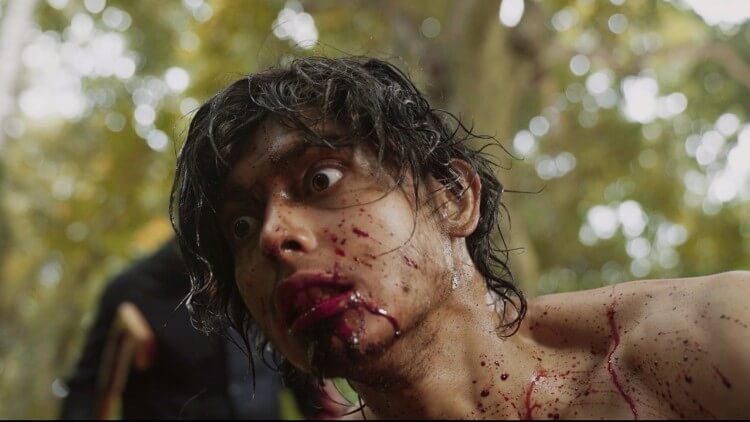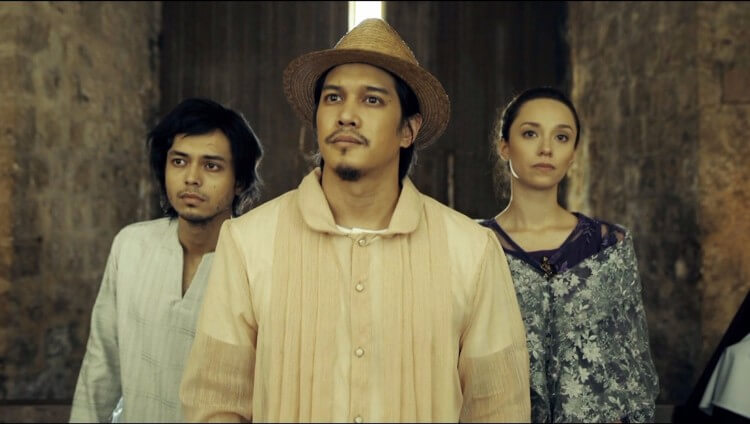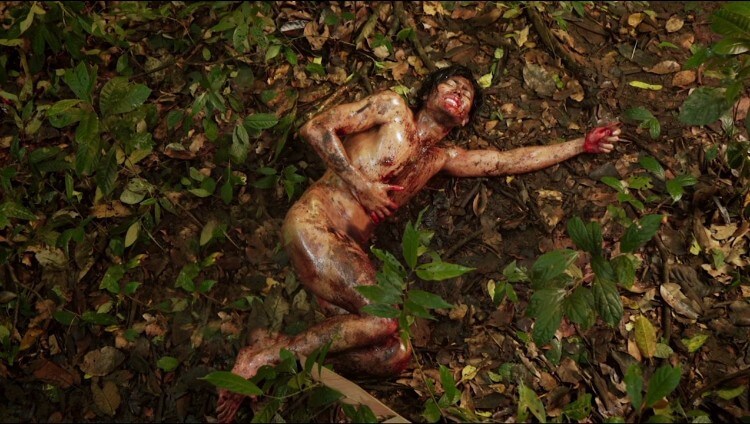I will go straight to the point: the TV adaptation of Tabi Po is bold, brave, and beautiful.
In an entertainment scene saturated by stories we’ve seen a thousand times over—family rivalries, long-lost daughters, mistresses and cheating husbands, bad guys in black jackets, you name it—it was a refreshing sight to instead see three bloodied, naked aswangs feasting on a human body in a Filipino TV show. Between the hisses, the blood-stained teeth, and the horror of it all, I, a spectator, was quite moved. Where has this show been all this time?
Picked up by Cignal TV’s SARI SARI Channel, Mervin Malonzo’s popular digital comics “Tabi Po” is about to hit the Filipino screen for the first time ever. The show will premiere on Cignal on October 27th as a six-part TV series.
I got invited to an exclusive screening of the show’s first episode. The viewing was held at Cignal’s Experience Center at Launchpad, in Mandaluyong. They had draped the store’s glass windows with black cloths, while chairs and some very comfortable couches faced a screen so massive, it covered an entire wall. Snacks and drinks were passed around. It was a whole theater experience, and I was genuinely excited.
I settled in, and not long after, the episode began.
From comics to TV
Tabi Po is a story centered on Elias, a neophyte aswang. The first few minutes of the pilot episode shows the “birth” of Elias from a tree, and his deranged wanderings in the forest as he discovers his insatiable craving for flesh. Tasyo and Sabel eventually find him, two other aswangs like Elias. They take him under their wing, feed him, clothe him, and educate him on both the ways of the human and the aswang. Together, the three go on a quest to find answers about their true nature.
This story is based on the graphic novel of the same title—Tabi Po. The digital comic version of the graphic novel has been around since 2010, and has developed a cult following through the years. Fans will be happy to learn that the TV adaptation will mostly remain loyal to the main plot of the original comic series, except that in the TV show, Elias is recounting events from a present-day setting that’s different from the graphic novel’s. Tabi Po’s creator, author Mervin Malonzo, has been largely involved in the production and writing of the TV series from the beginning.
The unconventional protagonists
In Tabi Po, the main characters are also the bad guys. AJ Muhlach, Adrian Alandy, and Phoebe Walker play the roles of Tabi Po’s ravenous aswangs whose stories we follow—Elias, Tasyo, and Sabel. The three share good chemistry on screen; although in this case, chemistry doesn’t necessarily mean a lovey-dovey spark. In a company of three aswangs, chemistry in Tabi Po is often served as tension and hostility between its main characters.
AJ Muhlach is a revelation. The handsome young actor completely disappears in the show and all you are left with is a vision of a mindless, savage, dirt-covered aswang hunting prey in the forest. Adrian Alandy is admirable, as expected. He has command, a strong presence, and takes space that is rightfully Tasyo’s as the oldest aswang in the group. And Phoebe Walker is a showstopper. Her eyes are constantly wild and hungry, and the poetic dialogues of Tabi Po when coming from her mouth sound almost like a serenade. She’ll lure you in.
The actors are selfless in their perfomance, surrendering completely to what I could only assume is a job that isn’t always easy. These are roles that ask much from them, after all. In Tabi Po, the characters are stripped down, figuratively and literally, and the show doesn’t try to protect its viewers from that.
The blood, the guts, and the bare bodies
Guts spilling and being pulled out from open bodies, blood dripping down chins and arms, teeth digging into flesh—Tabi Po takes a bold step forward for Philippine TV content and dives all the way in. The show doesn’t shield its viewers from blood and gore. Not even from nudity. The aswangs, responding to their primal instincts, would strip down to bare backs and bottom as they devour their meal.
Scenes like these are some of my favorites in the pilot episode, simply because they were the same moments I realized Tabi Po isn’t like any other TV series. In a country and culture where a large population remains conservative, Tabi Po stands out as a show that’s full of courage, ready to set the bar higher for Philippine TV experience.
The cinematography
Here’s the cherry on top of it all. If you are a sucker for good cinematography, you will love Tabi Po. Many of the show’s scenes, though sensitive in nature, were delivered in taste and art, while the important sequences really stand out.
In the first few minutes of the pilot episode, for example, the camera glides deep into the forest, and I remember feeling astounded at the crispness of the leaves, the cacophony of colors, and the feeling that I was in the forest too and not just watching it. The birth of Elias from the tree and him stumbling hungrily in the woods is also a cinematic pleasure for the senses. These aren’t just important establishing shots, it’s establishing feelings, too.
And that is just the beginning. There are more wonderful scenes to discover, like the symbolic cleansing at the river which is undoubtedly the best scene from the pilot episode.
Filipinos have long been ready for new, bold, and brave TV content; no one has just stepped up to the plate yet…until now. Tabi Po is not here to play small—this is the kind of quality TV series Filipinos have been waiting for.
And like Elias, a voracious newborn aswang, my first taste of Tabi Po, of something that has so much life in its veins, has left me hungry for more.
Directed by Paul Basinillo, Tabi Po premieres on October 27 at 8PM on SARI SARI Channel on Cignal. Catch it every Friday at 8PM from October 27 to December 1.







